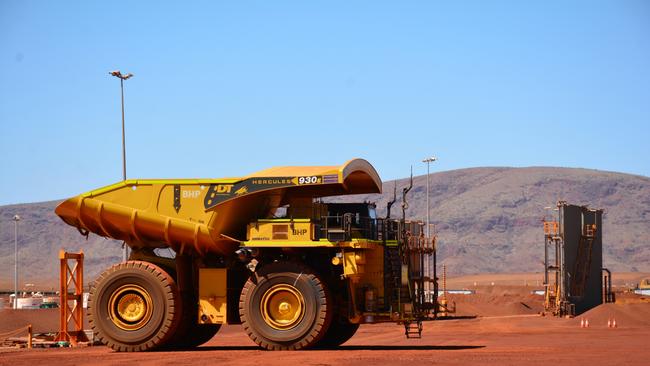BHP lifts Queensland coal output despite weather impacts
Steady and reliable production is BHP’s major goal under the leadership of Mike Henry, and the mining giant is delivering on that promise.

BHP’s Queensland coal division lifted production in time to catch the coal price peaks, avoiding the worst of the weather that hit NSW and Queensland in the March quarter to book a strong lift in output in the period.
While BHP said its operations were still hit by bad weather, along with Covid-19 impacts and labour shortages, metallurgical coal production from BHP’s Queensland operations was up 20 per cent compared to the December period, to 10.5 million tonnes, a 10 per cent lift on the first three months of 2021.
BHP said its Queensland coal operations were still on track to hit output guidance of 68 to 72 million tonnes for the full year, with the company expected to transfer ownership of its BMC assets – which produced 2.6 million tonnes of metallurgical coal in the period – to Stanmore Coal in early May.
Production at BHP’s WA iron ore operations slipped in the March quarter as the WA skills shortage continued to bite, with the iron ore major shipping 67.1 million tonnes of iron from its Pilbara operations.
Shipments were down 8.3 per cent compared to the three months to the end of December, but up slightly compared to the March quarter in 2021.
BHP had previously flagged that major maintenance campaigns on its rail network for slow output in the first quarter of 2022, and said on Thursday company said the impacts of the skills shortage – including ongoing problems recruiting train drivers and other temporary labour constraints – had been offset but a strong performance across the rest of its supply chain.
UBS analysts had expected BHP to ship about 68 million tonnes in the quarter.
BHP has so far shipped 211.1 million tonnes of iron ore from the Pilbara, up from 210.1 million tonnes at the same time last year, and said it was on track to meet annual guidance of 278 to 288 million tonnes for the full year.
But the company joined Rio Tinto in warning that the spread of Covid-19 in the WA workforce could have an impact in the current quarter, saying WA was likely to hit its peak case numbers in the June quarter.
BHP also booked lower copper output for the period, down 10 per cent compared to the same time in 2021 to 369,700 tonnes, on lower grades from its giant Escondida mine in Chile and lower output from Olympic Dam in South Australia after the completion of a major overhaul of the smelter at the operation.
But BHP dropped its copper output guidance for the year on labour shortages and falling grades at Escondida, saying it now expected its mines to produce 1.57 to 1.62 million tonnes of copper for the year, down from earlier guidance of 1.59 to 1.76 million tonnes.
BHP chief executive Mike Henry said the company had delivered a solid quarter of “safe and reliable production”.
But the BHP boss warned the company’s outlook had been made more uncertain by Russia’s invasion of Ukraine.
“Market volatility and inflationary pressures have increased further as a result of the Russian invasion of Ukraine,” he said.
“We continue our work to mitigate cost pressures through a sharp focus on operational reliability and cost discipline. While we expect conditions to improve during the course of the 2023 calendar year, we anticipate the skills shortages and overall labour market tightness in Australia and Chile to continue in the period ahead.”
The rapid spread of Covid-19 in WA also forced BHP to downgrade forecast production from its Nickel West operations, where output plunged 13 per cent from the December period, to 18,700 tonnes of nickel.
BHP said the spread of Covid-19 through its workforce, as well as skills shortages, were to blame for the falling nickel output.
BHP cut its nickel guidance by 10 per cent on Thursday due to the ongoing impact of Covid-19, saying it now expects Nickel West to producer 80,000 to 85,000 tonnes of nickel in the full financial year.
BHP shares closed down $1.60, or 3.1 per cent, to $50.70 on Thursday.





To join the conversation, please log in. Don't have an account? Register
Join the conversation, you are commenting as Logout